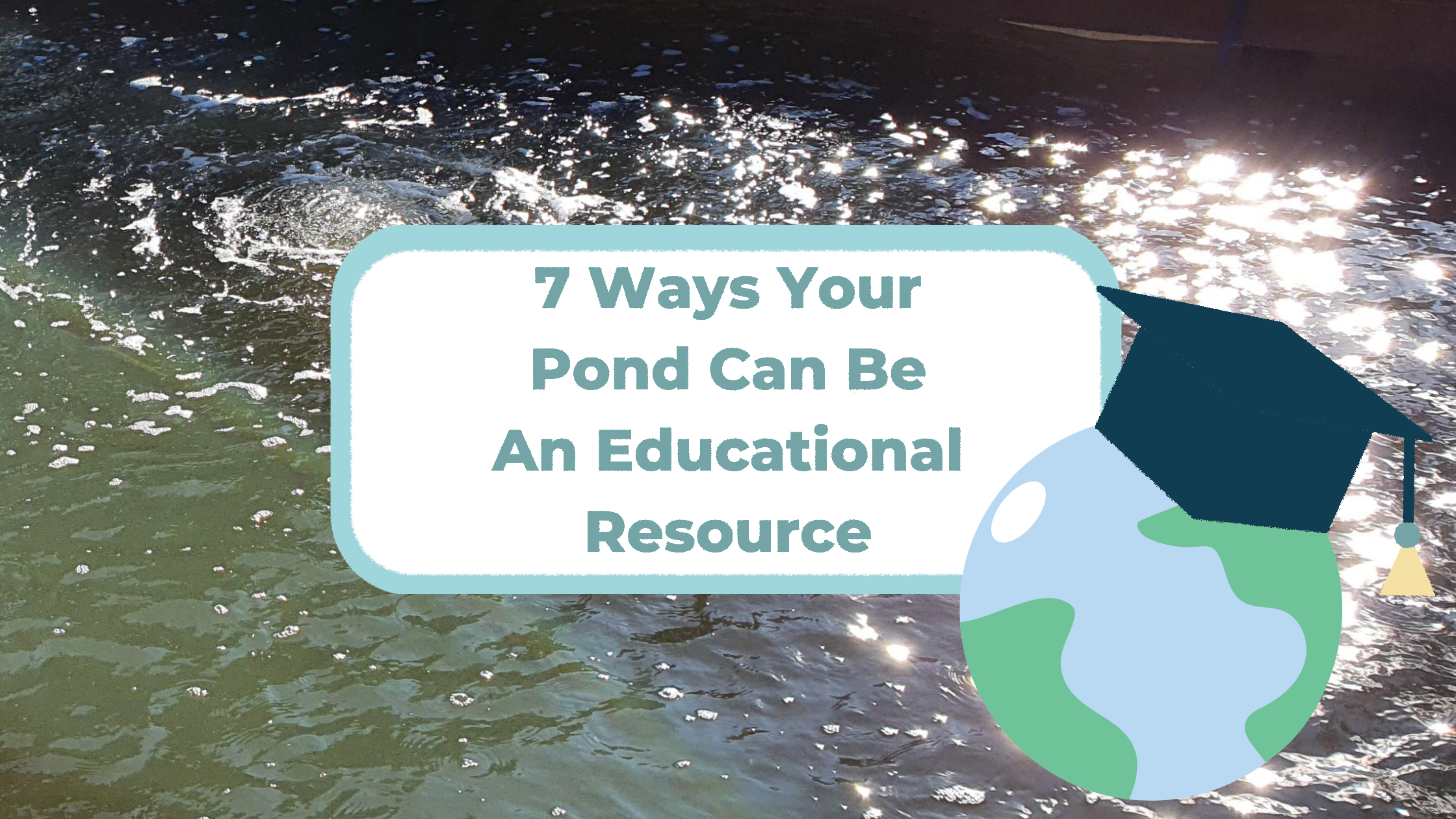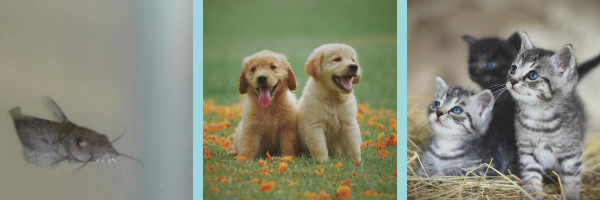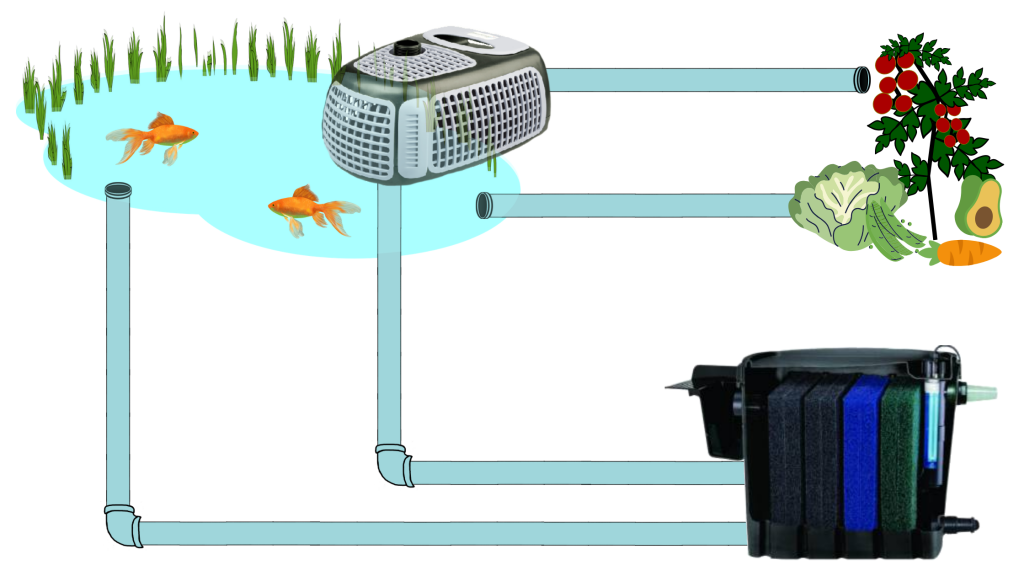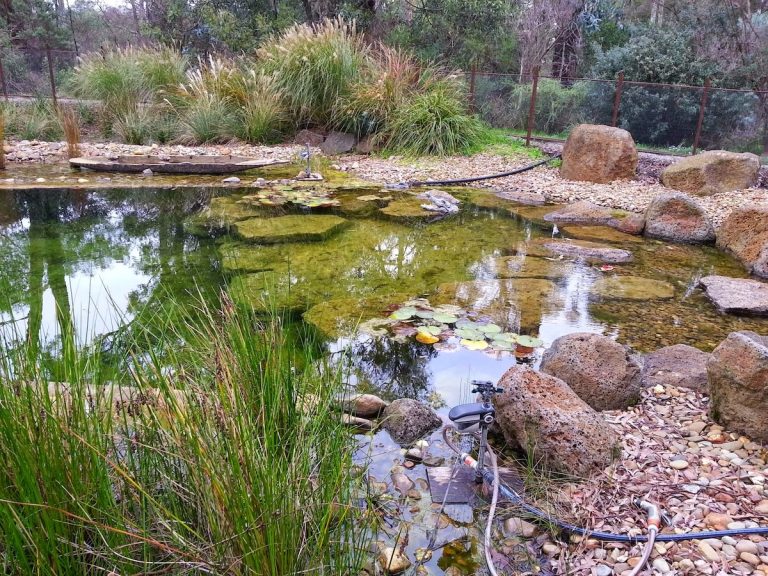Having a backyard pond is great for achieving that zen feeling. There’s something so relaxing about listening to the sound of trickling water while you watch your fishy friends dance about their home.
And while this is definitely a majorly ponderful perk, it isn’t the only upside to having your own little aquatic ecosystem at your fingertips – Backyard fish ponds can also be great learning resources for children.
From caring for pets to learning about nature and many things in between, your little bubble of bliss can also be a player in your children’s education.
Water Safety
An awareness of, and respect for, water, is one of the most important things for children to have. The younger they understand the dangers and how to keep themselves safe, the less risk there is of water related accidents happening in the future.
Yes, ponds should be in areas that aren’t easy for children to access. But when your kids do go near your pond, it’s the perfect way to teach them about staying safe around water.
Just make sure that your children have learnt to swim before you let them get too close.
Caring For Pets
Fish are great to get kids started with because as long as their water quality is kept in check, they’re a wonderful, low maintenance starter pet.
Younger children can help out with feeding the smallest members of your family. And those that are big enough can assist with pond cleaning and maintenance tasks such as vacuuming out sludge, applying biological treatments or giving your filter media a refresh.
This helps teach them responsibility. And prepares them for taking care of that puppy or kitten that you will inevitably be asked for at some point in the future.
Learning About Ecosystems
Got a budding scientist in the family? Want to teach your children about sustainability? Or maybe you just want the kids to be more aware of the world around them?
Your pond is one of the best learning resources you could have in your home for teaching children about nature.
While some may see ponds simply as a landscaping feature or a home for their fish, they’re actually complete miniature ecosystems. Your very own version of some of the most majestic water bodies in the world. By having one in your backyard, you’ve essentially got classroom for your children to learn about all things natural.
Your fishy friends can provide a lesson in life cycles. The way they interact with their surroundings showcases interactions between different species. And the entire pond can teach your children about the delicate balance of our natural resources.
For those with older children who want to dig deeper, you can take things to a micro level and have a biology lesson thanks to the many species of beneficial bacteria living in your pond. The nitrification cycle for example, is the same no matter where it is. And even those nasty algae blooms that show up from time to time can be a wonderful science less for children learning about photosynthesis, nutrients and the way different aspects of an ecosystem are all connected. Or you could spend a day learning about tardigrades. They’re the world’s strongest animal, and you could even find some that your children can keep in their room as pets if they’d like to.
You can also take things to a macro level and teach children about how your pond is related to the wider world. Bees visit because of your pond plants and landscaping therefore helping with pollination. The presence of frogs means that your pond and the surrounding environment are healthy. Even the run off from the rest of your yard can be educational. Use it to teach children about the pollution of our waterways and dangers of contamination.
When you clean your pond filter you can teach children about how everything affects everything else. Pumping pond water and nutrient rich sludge onto your veggie patch or flower garden? Use it to teach about energy transference and how nutrients create different results based on the environment.
The possibilities are endless!
Growing Food
Does someone in your family have a green thumb?
Why not turn your pond into an all you can eat buffet?
Plenty of edible plants can be grown within the pond itself. This gives you fresh produce and your fishy friends some interesting new neighbours. This provides them with variety for their diet, protection from predators and fun new things to play with.
If that isn’t your thing, you can use your pond water as fertiliser for your veggie patch or a biological boost for your compost heap.
Or, if you want to be really fancy, you can attach an aquaponics system to your pond and have your very own, highly sustainable, super garden.
This is a great way to teach children about new foods and get them to expand their diets. Think about it, they’re a lot more likely to munch on an interesting fruit or vegetable for the first time if they’ve grown it themselves. We recommend the GrowEasy All-In-One Aquaponics Starter Kit for those who want an easy way to get started.
We got into this bit in a bit more depth in our article on taste testing your pond. But the short version is using your pond in any of these ways provides fresh, high quality produce for your dinner table and an educational experience for your children. Being able to grow their own food is a great life skill to have. And even if they choose not to have their own growing set up once they’re older, you’ll at least know that they’re capable of doing so if they choose to.
Plus, they’ll learn a thing or two about gardening in general along the way. This will make life a lot easier for them when they have their own homes and have to maintain the yard.
Learning To Fish
Now this one probably isn’t the best idea if your pond is full of pets that you’ve formed emotional attachments to, but if you have a larger pond that is used for growing fish to eat (or only has them in there because they came with the place), learning to fish is another skill that your children can pick up from your pond.
Not everyone will enjoy playing the waiting game, but if your children do, you’ll have provided them with a fun hobby that they can use to gather food and bond with new friends when they’re older.
Sensory Development
Because your pond is likely to provide your children with new experiences, it’s also a great way to promote sensory development. This is obviously more for the younger ones but getting to see, hear, smell and touch new things (and taste them if you’re growing food as noted above) is a great way to support the sensory development of little minds.
You can also help them improve their hand-eye coordination by setting them loose with a net. Trying to catch butterflies, dragonflies, etc. is fun and beneficial for development. Once caught, these creatures can become a new educational experience of their own. Just make sure they’re safely released when you’re done. As beautiful as they are, and as much as your little ones may want to keep them, they’re incredibly important for the environment.
Spatial Awareness And Design Concepts
Older children can also be taught about spatial awareness and design concepts with the help of your pond. Adding new plants (decorative or edible) can help them learn about how things fit in certain spaces. This also unlocks their creativity and teaches them about design concepts and processes.
Plus, if all that educational goodness isn’t enough for you, hanging out by the pond is a great way to get your children spending more time outside. This has been proven to be useful for both their general health and wellbeing and their mental development. In fact, outdoor play carries a whole host of benefits that will have you wondering why you didn’t increase their time in the backyard sooner.
So there you have it, seven benefits that your backyard fish pond can contribute to your child’s education.
Bonus Perk:
If you don’t yet have a pond but are looking to construct one, older children can be included in the process. This will help them learn about organisation, project management, landscaping, and more. And, they’ll be more likely to love spending time by, and want to help out with, the pond if they’ve had a say in how it all came together.
We have a collection of pond construction resources here.






